Lowndes County Interpretive Center; Selma to Montgomery National Historic Trail
Introduction
Text-to-speech Audio
Images
The Selma to Montgomery National Historic Trail is dedicated to 54 miles of Highway 80 used by civil rights activists as they marched from Selma to Montgomery to achieve voting rights.
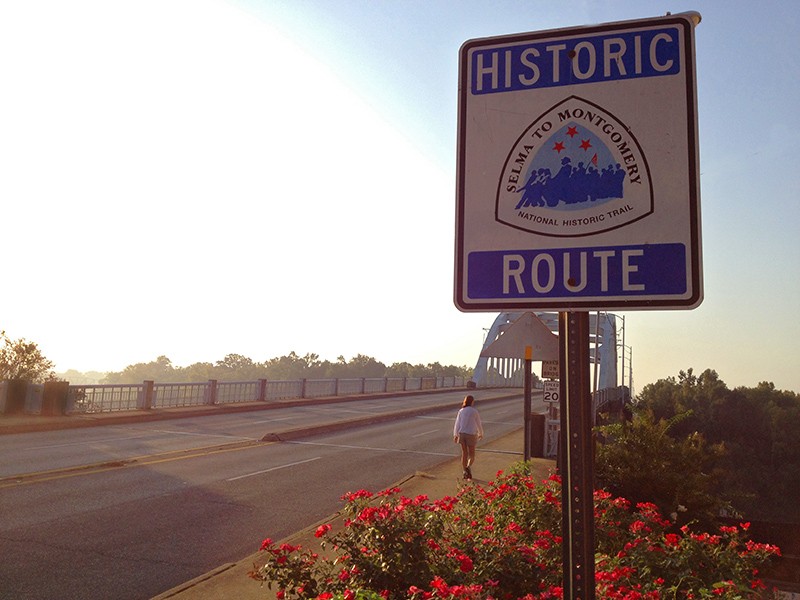
The third and final march extended over a period of 5 days, concluding on the steps of the Alabama State Capitol.
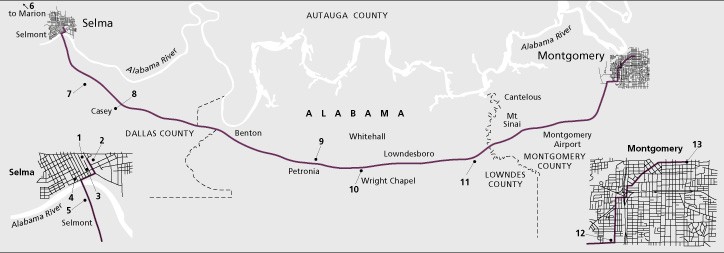
After the distribution of news footage from the first two marches, thousands of people came from all over the country to participate in the third march.
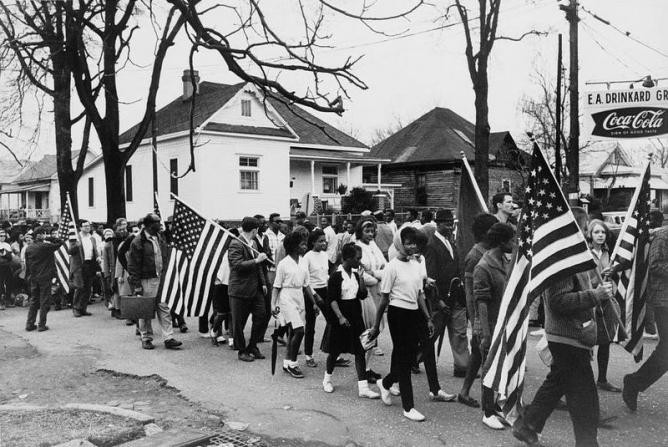
During the first two marches the marchers were met with opposition from the Alabama State Police and white supremacists.
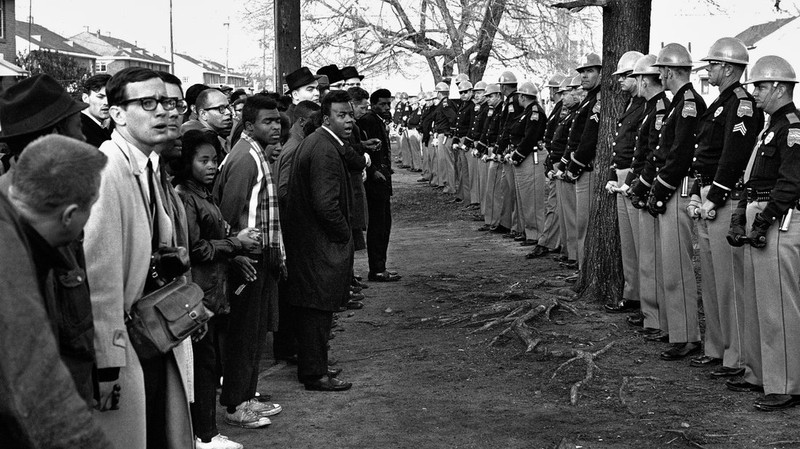
On March 7 marchers were met with violence at the Edmund Pettus Bridge when they attempted their first march; because of the violence of this day, March 7, 1965 became known as "Bloody Sunday."
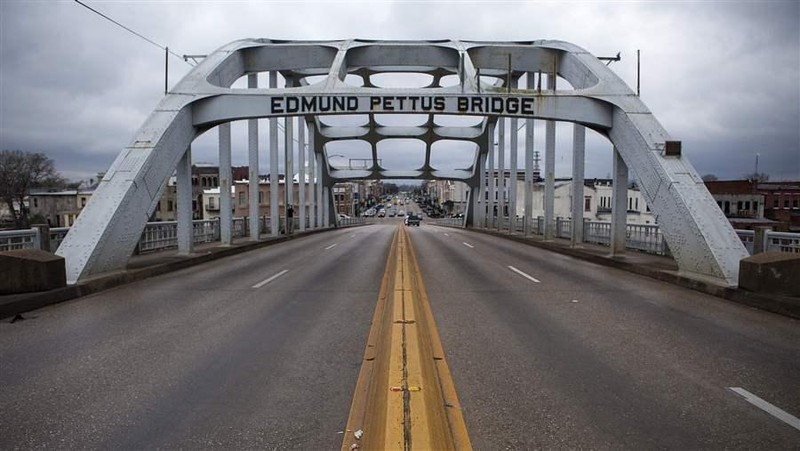
Backstory and Context
Text-to-speech Audio
In January and February of 1965, Selma
was uneasy as protests, small marches, arrests, and murders consumed the city
in response to the fight for voting rights. Instead of allowing these
setbacks to deter them, civil rights activists dove into the restlessness and
organized a series of mass marches in favor of voting rights. These
activists organized 3 marches at the Brown Chapel African Methodist Episcopal
Church that had been established by freedmen in 1908.
On March 7, the first march led by Hosea
Williams and John Lewis consisted of 500 Black and white marchers and started
from the Brown Chapel AME Church with the goal to reach Montgomery. However,
when the marchers tried to cross the Edmund Pettus Bridge in Selma, the Alabama
State Police stood in their path and refused to let them pass. The marchers
would not leave and in response the police beat them until they retreated to
Brown Chapel. The media and cameras were present to catch the violence as
it happened and aired it across the country. After the distribution of the
new footage, viewers came to the realization that no one was immune to violence
if they supported the Civil Rights Movement and especially voting rights. Due
to the events of the day, March 7 soon became known as "Bloody
Sunday."
Despite the danger supporters of the
movement faced, more people arrived in Selma to participate in the
marches. The SCLC planned a second march for March 9, and sent a request
to federal judge Frank M. Johnson Jr. to make the state and surrounding
counties allow a march to Montgomery. As they were preparing to receive an
answer, activists marched to the Pettus Bridge a second time but were once
again blocked by state police. While the second round of marchers were not
met with violence, later that evening a pastor was hit in the head and killed by
white supremacists. Selma received more and more national attention after these
marches. On March 15, 1965 President Lyndon B. Johnson spoke in front of
Congress and the country to denounce the hatred and discrimination that had
plagued the country for several years. At the same time of President
Johnson's speech, the SCLC was still anticipating a response from Judge
Johnson.
The judge decided that the marchers
had the right to peacefully protest, and demanded that the state allow them to
conduct the march. In exchange for this protection, only a certain number
of marchers would be allowed to enter Montgomery. This decision allowed King
and others to prepare the third march. The march began on March 21 and
lasted for 5 days; on the last day the marchers arrived in Montgomery and tried
to plead their case to Governor George Wallace but were unsuccessful.
Despite this, the marchers still achieved a victory when President Johnson
signed the Voting Rights Act of 1965 on August 6. The act outlawed the
methods such as, literacy tests and poll taxes, states had used to prevent
African Americans from voting, violating the 15th Amendment that outlawed
disfranchisement based on race in 1870. While the Voting Rights Act was
not taken seriously at first, it allowed for African Americans to legally
defend their right to vote and it brought more people to the polls.
Sources
"Voting Rights Act." History. Accessed on October 10, 2017. http://www.history.com/topics/Black-history/voting-rights-act
